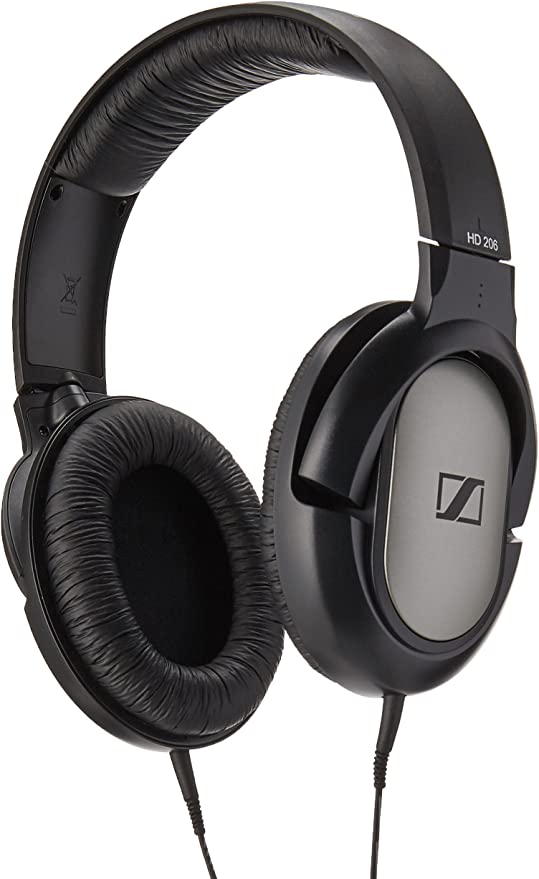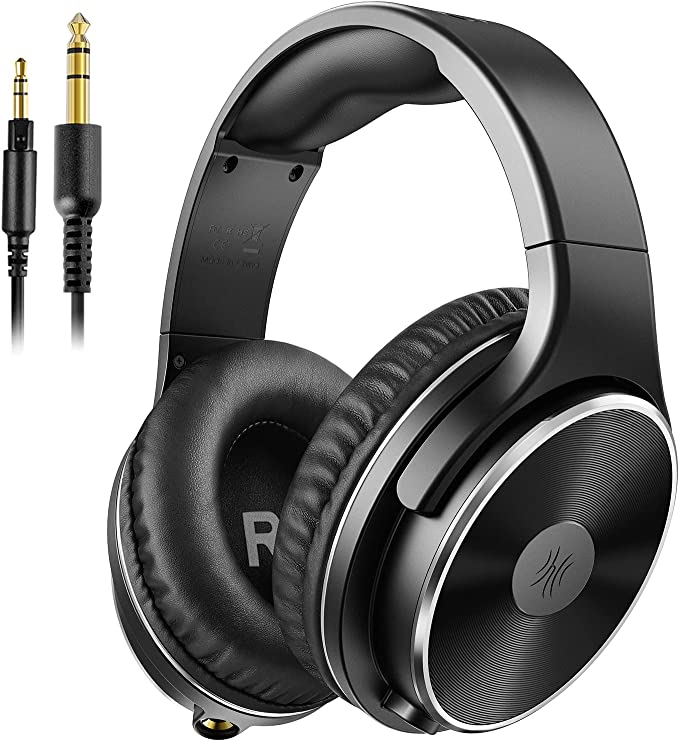RØDE NT1 5th Generation: Revolutionizing Home Recording with Unprecedented Clarity
Update on March 19, 2025, 5:05 p.m.
We live in a world saturated with sound. From the gentle hum of nature to the vibrant pulse of a city, sound shapes our experiences and connects us to the world around us. And in today’s digital age, the ability to capture and share high-quality audio has become increasingly important, whether it’s for podcasting, music production, streaming, or simply communicating clearly online. But achieving truly pristine sound can be a challenge, often requiring a delicate balance of technical knowledge and artistic sensibility.

A Journey Through Sound Recording History
The quest to capture sound has a rich and fascinating history. It began in the mid-19th century with Édouard-Léon Scott de Martinville’s phonautograph, a device that could visually record sound waves but not play them back. Thomas Edison’s phonograph, invented in 1877, marked a major breakthrough, allowing both recording and playback of sound using a tinfoil-covered cylinder.
The invention of the microphone in the late 19th century revolutionized sound recording. Early microphones, such as the carbon microphone, were relatively crude but paved the way for more sophisticated designs. The 20th century saw the development of dynamic microphones, ribbon microphones, and, crucially, condenser microphones, each with its own unique characteristics and applications. Condenser microphones, known for their sensitivity and detail, became a staple in recording studios worldwide.
Enter the RØDE NT1 5th Generation: A Modern Marvel
The RØDE NT1 5th Generation represents the culmination of decades of microphone innovation. Building upon the legacy of the original NT1, a microphone renowned for its warm, natural sound and exceptionally low self-noise, the 5th Generation adds a suite of cutting-edge features that make it a true game-changer for both seasoned professionals and aspiring creators. The most notable of these is its dual-connect output, offering both XLR and USB connectivity – a world first.
Dissecting the Diaphragm: How Condenser Microphones Work
At the heart of the NT1 5th Generation (and all condenser microphones) lies a delicate diaphragm, typically made of a thin, gold-sputtered Mylar sheet. This diaphragm is positioned close to a fixed backplate, forming a capacitor. When sound waves strike the diaphragm, it vibrates, causing the distance between the diaphragm and the backplate to change. This change in distance alters the capacitance, which in turn produces a varying electrical signal that mirrors the sound waves. This electrical signal is incredibly weak, requiring amplification before it can be recorded. This is unlike a dynamic, commonly seen on a stage that is much more rugged, and uses a moving coil.

The Heart of the Matter: Cardioid Polar Pattern Explained
The NT1 5th Generation utilizes a cardioid polar pattern, meaning it’s most sensitive to sound coming from the front, while rejecting sound from the sides and rear. Imagine a heart shape (hence “cardioid”) superimposed over the microphone, with the point of the heart facing forward. This pattern is ideal for isolating the desired sound source, such as a vocalist or instrument, while minimizing unwanted background noise and room reflections. A useful characteristic of Cardioid polar patterns is something called proximity effect, and increase in low-end when you get close to the microphone.
Bridging the Analog and Digital Worlds: XLR vs. USB
The dual-connect output of the NT1 5th Gen offers unparalleled flexibility. The XLR connection, a standard in professional audio, provides a balanced analog signal that’s less susceptible to interference over long cable runs. This is the traditional way to connect a microphone to an audio interface or mixer, offering maximum control over the recording process.
The USB connection, on the other hand, transforms the NT1 5th Gen into a complete audio interface, allowing direct connection to a computer without any additional hardware. This is incredibly convenient for podcasters, streamers, and anyone who wants a simple, high-quality recording setup.
The 32-Bit Float Revolution: Unlocking Unprecedented Dynamic Range
One of the most groundbreaking features of the NT1 5th Gen is its 32-bit float digital output when using the USB connection. To understand the significance of this, let’s delve into the concept of dynamic range.
A Deeper Dive: Understanding Dynamic Range and Headroom
Dynamic range refers to the difference between the quietest and loudest sounds a system can capture without distortion. Traditional digital audio formats, such as 16-bit and 24-bit, have a fixed dynamic range. If the incoming signal is too quiet, it will be buried in the noise floor. If it’s too loud, it will clip, resulting in unpleasant distortion.
32-bit float recording, however, offers a vastly expanded dynamic range. Think of it like this: imagine you’re trying to measure the height of objects, from a tiny ant to a towering skyscraper. With a standard ruler (16-bit or 24-bit), you might struggle to accurately measure both extremes. But with a magical, infinitely extendable ruler (32-bit float), you can measure anything, no matter how small or large, without ever running out of scale. While not actually infinite, 32-bit float gets you so much headroom that you don’t really need to worry about clipping.
This means you can record with the NT1 5th Gen without worrying about setting the perfect gain level. Even if your recording is initially too quiet or too loud, you can adjust the levels in post-production without any loss of quality or increase in noise. It’s a game-changer for anyone who’s ever struggled with clipping or noisy recordings. It’s important to note, though, that while your digital signal won’t clip, extremely loud sounds can still overload the microphone’s capsule itself, and cause distortion.
The Revolution Preamp™: A Symphony of Low Noise
The NT1 5th Gen features RØDE’s custom-designed Revolution Preamp™. A preamp’s job is to amplify the weak signal from the microphone capsule to a usable level. The challenge is to do this without adding any unwanted noise.
Noise in audio can come from various sources, including thermal noise (caused by the random movement of electrons in electronic components), shot noise (caused by the discrete nature of electric charge), and flicker noise (a type of low-frequency noise). The Revolution Preamp™ is engineered to minimize all these types of noise, resulting in an incredibly clean and transparent signal. The result of all this engineering is an incredibly low self-noise of just 4dBA.

Capturing Every Nuance: The Importance of High-Resolution A/D Conversion
When you record digitally, the analog signal from the microphone must be converted into a digital representation. This is done by an analog-to-digital converter (A/D converter). The NT1 5th Gen boasts high-resolution A/D conversion, up to 192kHz.
The two key parameters that determine the quality of A/D conversion are sample rate and bit depth.
- Sample Rate: This refers to the number of times per second the analog signal is “sampled” or measured. Higher sample rates capture more snapshots of the sound wave, resulting in a more accurate representation. Think of it like frames per second in a video – more frames mean smoother motion. Common sample rates are 44.1kHz (CD quality), 48kHz, 96kHz, and 192kHz.
- Bit Depth: This refers to the number of bits used to represent each sample. Higher bit depths provide more possible values for each sample, resulting in a wider dynamic range and finer detail. Think of it like the number of colors in an image – more colors mean a richer and more nuanced picture.
The NT1 5th Gen’s 192kHz sample rate and, when using XLR, typically 24-bit bit depth (dependent on your audio interface) capture an incredible amount of audio detail. While the human ear may not directly hear the difference between 96kHz and 192kHz in all situations, the higher sample rate can provide benefits in terms of reduced aliasing (a type of digital artifact) and improved transient response (the ability to accurately capture fast changes in sound). Combined with the 32-bit float recording capability via USB, the NT1 5th Gen offers a level of fidelity that was previously unheard of in a microphone at this price point.
Real-World Applications: Unleashing the NT1 5th Gen’s Potential
The versatility of the NT1 5th Gen makes it suitable for a wide range of recording scenarios. Let’s explore a few key applications:
Podcasting: Achieving Clear and Engaging Vocals
For podcasters, clarity and intelligibility are paramount. The NT1 5th Gen’s low self-noise and smooth frequency response make it ideal for capturing spoken word. The cardioid polar pattern helps to reject unwanted background noise, while the 32-bit float recording (via USB) provides a safety net against accidental clipping, ensuring that your voice always sounds its best. The included pop filter helps to minimize plosives (those popping sounds caused by bursts of air from words like “p” and “b”).
Music Production: Recording Vocals and Instruments
The NT1 5th Gen is equally at home in the music studio. Its warm, detailed sound makes it an excellent choice for recording vocals, acoustic guitars, pianos, and a variety of other instruments. The XLR connection allows you to pair it with your favorite high-end preamp and audio interface for maximum sonic control. The high SPL (Sound Pressure Level) handling capability means it can handle even loud sound sources without distortion.
Voice-Over: Capturing the Subtleties of Vocal Performance
Voice-over work demands a microphone that can capture every nuance of vocal expression. The NT1 5th Gen’s sensitivity and low noise floor allow it to capture even the most subtle inflections and details, bringing your voice-over performances to life. The included shock mount helps to isolate the microphone from vibrations, preventing unwanted rumble and handling noise.
Beyond the Basics: The Impact of Room Acoustics
While the NT1 5th Gen is a remarkably capable microphone, it’s important to remember that the recording environment also plays a crucial role in the final sound. Even the best microphone can’t overcome the problems of a poorly treated room.
Reflections from walls, floors, and ceilings can create unwanted echoes and reverberations, muddying the sound. To improve your recording environment, consider using acoustic treatment materials such as:
- Absorption Panels: These panels, often made of foam or fiberglass, absorb sound energy, reducing reflections.
- Diffusers: These panels scatter sound waves, preventing strong reflections and creating a more natural-sounding ambience.
- Bass Traps: These specialized absorbers are designed to tame low-frequency resonances, which can be particularly problematic in small rooms.
By combining the NT1 5th Gen with a well-treated recording space, you can achieve truly professional-sounding results.
Conclusion: Empowering Creators with the Science of Sound
The RØDE NT1 5th Generation is more than just a microphone; it’s a testament to the power of innovation and the relentless pursuit of sonic excellence. By combining classic analog warmth with cutting-edge digital technology, RØDE has created a tool that empowers creators of all levels to capture their vision with unprecedented clarity and detail. Whether you’re a seasoned professional or just starting your audio journey, the NT1 5th Gen invites you to explore the science of sound and unlock your creative potential. The ability to seamlessly switch between USB and XLR connectivity is a truly remarkable feature, offering a level of adaptability unseen in many other microphones, making this microphone an invaluable part of anyone’s recording arsenal.








































